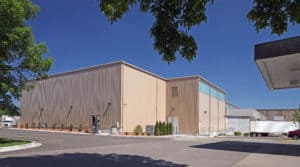INTRODUCTION
The COVID-19 pandemic will have lasting effects on the warehouse industry, specifically the cold storage sector. Cold storage warehouses are “essential” and still operating as the demand for fresh and frozen products is growing by the day.
According to a study by the United States Commercial Real Estate Services (CBRE), an additional 75 million to 100 million square feet of industrial freezer/cooler space will be needed to meet the demand generated by online grocery sales in the next five years.
Here are some things that may change in the cold storage sector due to COVID-19.
CHANGING THE SPACE USAGE OF COLD STORAGE FACILITIES
As you know, the number of cold-stored products in demand, ranging from refrigerated or frozen desserts, fruits, vegetables, beverages, meats, fish and seafood, has grown. Assuming you need to expand your cold storage warehouse, make sure it:
- Includes a pre-determined temperature that is consistently maintained throughout each facility,
- Complies with all government regulations, and
- Conserves the most energy as possible.
You may need to include design features such as insulated panels, external cladding and recycled heating systems.
Insulated panels help maintain the desired temperature and are an essential building material for large-scale refrigeration. If you’re thinking of renovating your existing cold storage warehouse, cladding may be a good option, as it provides a new look and new life to an old building and can effectively generate savings in electricity.
CREATING MULTIPLE COLD STORAGE UNITS
Instead of, or in addition to, reconfiguring your existing space, you also can build another cold storage facility. Having more than one unit can significantly enhance your company’s ability to compete and quickly serve its customers.
In addition, having cold storage units that are closer to your customers will help to minimize your carbon footprint.
To get started, you will need to do a site analysis, taking into consideration any rental rates and taxes, workforce availability, accessibility to roads and highways, proximity to major suppliers or customers and utility cost. Another factor when creating multiple cold storage units is your budget. According to Cushman & Wakefield, depending on the size of the project, the average cost of a warehouse could run between $100.57 per square foot to $150.95 per square foot.
COLD STORAGE BENEFITTING FROM NEW TECH
To help increase efficiency and decrease your operating costs, consider adopting new technologies, such as:
- Cascade refrigeration systems, which are energy-savers, allow for stable ultra-low temperature operation. The running cost is inexpensive, and repair is easy.
- High-speed doors increase refrigeration efficiency, optimize your cold storage operation, save costs and energy, and are safe.
- Energy-efficient walls, like ones made from recycled insulation, can help the cold food industry meet today’s challenges.
- Automated cranes (crane-based automated storage and retrieval systems – AS/RS) optimize cubic space usage and help achieve less product and facility damage.
FOR MORE INFORMATION
FoxArneson specializes in both design and building services for warehouse/distribution center and in the grocery store and supermarket industry, including the preconstruction and site selection phase as well as renovations to accommodate the surge in demand of cold storage solutions.

